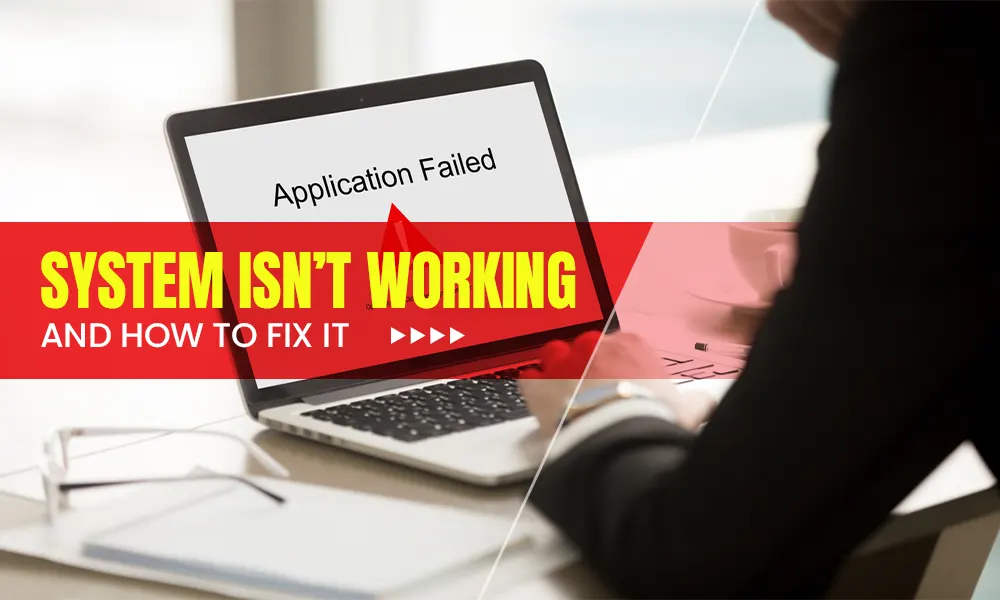
The modern digital era has brought us many conveniences and efficiency gains regarding our day-to-day workflow. Workflow systems are integral to modern business operations, allowing companies to streamline operations and increase efficiency. However, there are still times when our workflow system may experience issues and cause difficulties.
It can cause significant problems, reduce productivity, and delay projects. However, you can ensure optimal productivity and a smoother workflow by identifying and resolving issues with the system workflow. This article will cover seven of the most common reasons why your system workflow isn’t working and some easy solutions for each issue.
Software glitches, compatibility issues, or other technical problems can cause these errors. To fix these problems, first, identify the source of the issue and then try restarting the system or running a diagnostic test to identify and fix the issue.
Additionally, ensure you have the right software and hardware requirements and that your system is up-to-date with all the latest software updates and security patches.
Using older software can mean your system workflow needs to catch up with industry changes and advancements. In addition, outdated software may require manual updates, leading to a faster and more efficient system.
Working with a developer to update the software or switching to a more modern system can help streamline workflow processes and increase productivity. Additionally, regular maintenance checks can identify areas where the software requires updating, allowing you to improve the system before any issues arise.
Communication gaps are often overlooked in a system workflow but can hugely impact its success. With communication and collaboration, tasks can easily get held up, and employees can become satisfied.
To ensure an effective system workflow:
Many system workflows fail because users need to receive adequate training. To succeed, educating everyone to utilize the system properly is essential. Training should include demonstrations, step-by-step instructions, and practical examples so users can fully understand how the system works and confidently perform their tasks.
If users encounter difficulties, a support team should be available to help with any issues. Additionally, revisiting the training materials from time to time can help employees stay up to date and continue to get the most out of your system workflow.
One of the possible causes of system workflow ineffectiveness may be the need for more resources. This could mean a need for more skilled personnel, capital, and technology. As a result, businesses may need to hire more personnel or purchase the necessary technology for their system workflow to run efficiently.
Proper training may be necessary for workers to ensure that their system use is up-to-date and effective. In addition, a company may need to focus on reducing siloing of resources, which can lead to inefficiencies and redundant processes.
Inconsistent data occurs when data is entered incorrectly or needs to be completed, resulting in discrepancies that prevent the system from functioning correctly.
Businesses should use consistent forms and input methods, double-check accuracy and completeness, and develop quality control checks. With these safeguards in place, the data used in the system workflow should be reliable and valid, resulting in a system that runs smoothly.
Lack of accountability is a significant factor in why system workflow fails. This means that the team doesn’t take ownership and responsibility for their actions, leading to tasks being neglected, delayed, or done incorrectly.
Additionally, the lack of accountability means that no one can provide real-time feedback and guidance when a task is going off track. As a result, implementing measures such as personal and team goal-setting and performance tracking can help improve accountability.
By doing so, teams can better understand what’s expected of them and feel more invested in their work, resulting in better workflow processes.
For a successful system workflow, many factors come into play. First, ensure the right personnel is in place and adequately trained to use the system. Ensure the right software and technology are being used and kept up-to-date. Finally, provide measures of accountability and goals.
Finally, make sure that the data is accurate, consistent, and complete and that everyone is regularly communicating and collaborating. Businesses can ensure that their system workflow is running optimally and maximizing productivity by taking these measures.